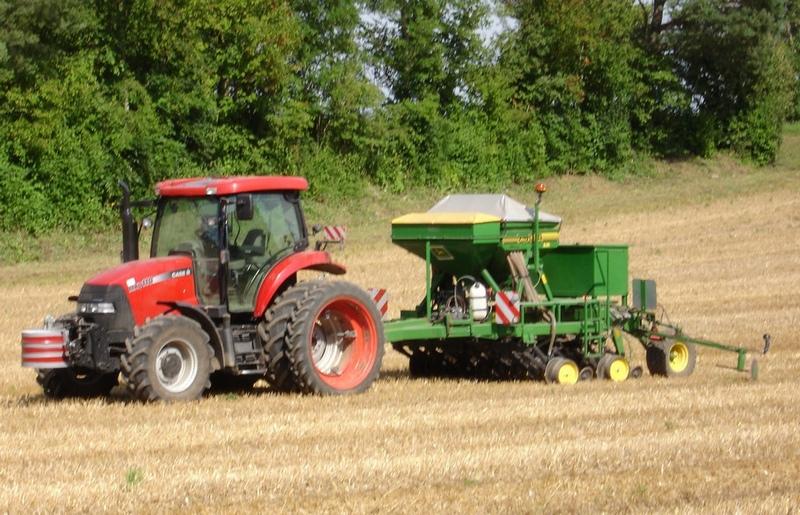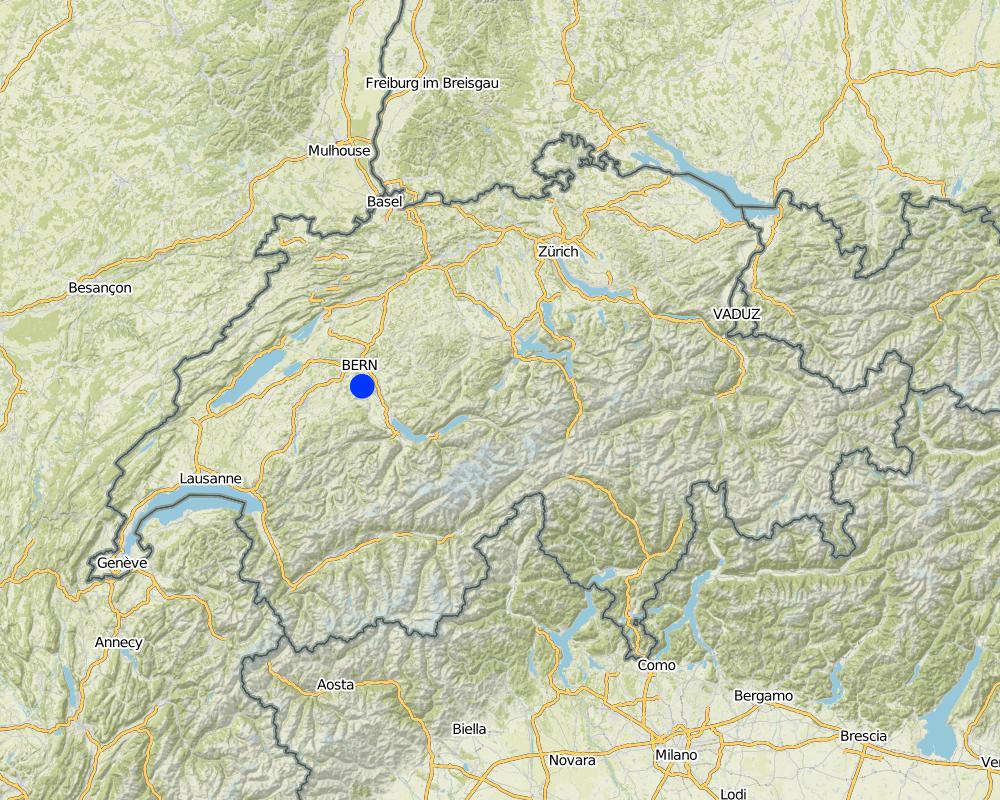Direct seeding [Suíça]
- Criação:
- Atualização:
- Compilador/a: Unknown User
- Editor: –
- Revisores: Fabian Ottiger, Alexandra Gavilano
Direktsaat (German)
technologies_1007 - Suíça
Veja as seções
Expandir tudo Recolher tudo1. Informação geral
1.2 Detalhes do contato das pessoas capacitadas e instituições envolvidas na avaliação e documentação da tecnologia
Pessoa(s) capacitada(s)
Especialista em GST:
Wyler Roman
Center for Development and Environment, University of Berne
Suíça
usuário de terra:
Streit Thomas
Suíça
Nome da(s) instituição(ões) que facilitou(ram) a documentação/ avaliação da Tecnologia (se relevante)
CDE Centre for Development and Environment (CDE Centre for Development and Environment) - Suíça1.3 Condições em relação ao uso da informação documentada através de WOCAT
O/a compilador/a e a(s) pessoa(s) capacitada(s) aceitam as condições relativas ao uso de dados documentados através da WOCAT:
Sim
1.5 Referência ao(s) questionário(s) sobre abordagens GST (documentado(s) usando WOCAT)
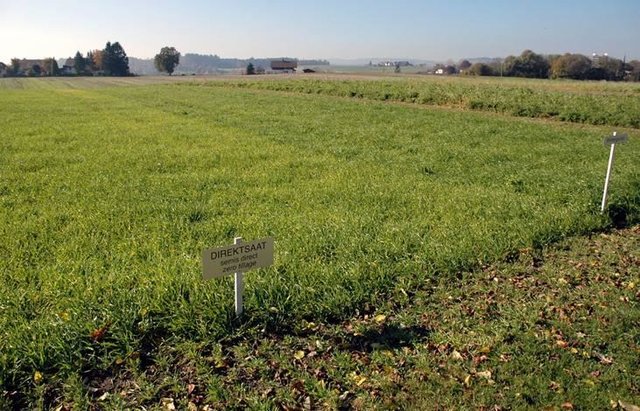
Subsidies for conservation agriculture [Suíça]
Land users commit to apply conservation agriculture on parts of their land for a period of 5 years. In return they get subsidies during this period.
- Compilador/a: Unknown User
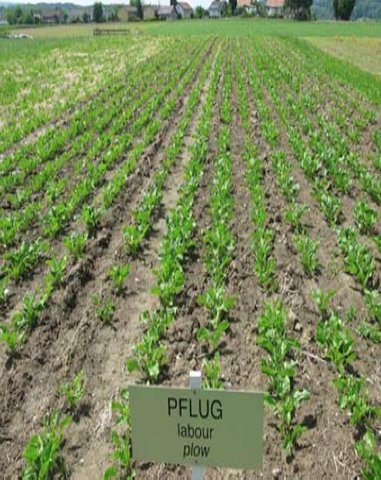
Soil support program for conservation agriculture [Suíça]
Through the soil support program land users get subsidies for applying conservation technologies on their fields during a period of 6 years.
- Compilador/a: Deborah Niggli
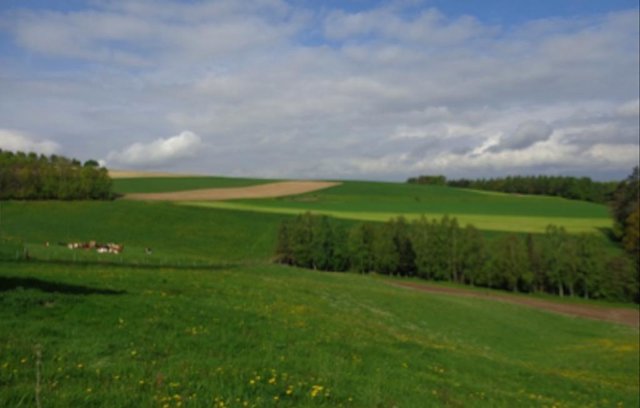
Direktzahlungssystem [Suíça]
Finanzielle Leistungen des Bundes um den Ertragsverlust, den eine Kultur für den Bauern bringt, auszugleichen. Das Direktzahlungssystem führt gewissermassen zu einer 'Vergünstigung des Produkts' für den Konsumenten.
- Compilador/a: Deborah Niggli
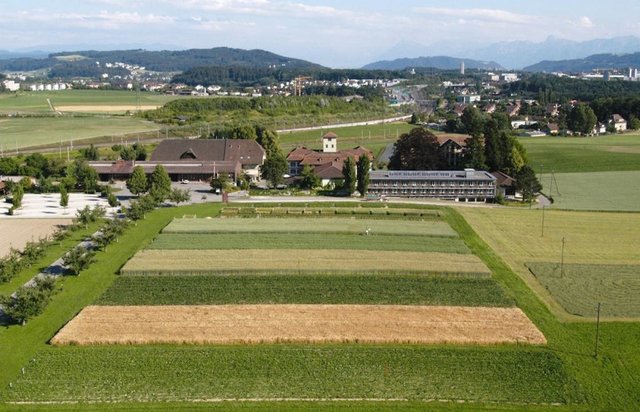
Förderprogramm Boden [Suíça]
Mit dem Förderprogramm Boden des Kantons Bern erhalten beteiligte Landnutzer Direktzahlungen für die Anwendung von bodenkonservierenden Anbauverfahren auf ihren landwirtschaftlichen Feldern. Das Projekt hat eine Dauer von 6 Jahren.
- Compilador/a: Deborah Niggli
2. Descrição da tecnologia de GST
2.1 Descrição curta da tecnologia
Definição da tecnologia:
A cropping system which allows to plant the seeds directly into the soil without ploughing. The soil is covered with plant remainders.
2.2 Descrição detalhada da tecnologia
Descrição:
The farm portaited is located in a hilly area near Bern. It is cooperating with an other farm of the village so that in total 32 ha of arable land are cultivated. All crops except for potatoes and sugar beets are produced within the no-tillage system. So the area cultivated with the no-tillage system is about 26 ha. The farm is producing mainly fodder (maize, wheat) for pigs. Beside this potatoes and sugar beets are produced to be sold. A typical crop rotation consists of a root crop, followed by a winter grain and a green manure. There are major meadows, too.
No-tillage characterizes a cultivation system without ploughing or any other reworking of the soil. After the previous crop (Maize, grain) has been harvested, a total herbicide is applied and the seeds are brought directly into the soil with a special machine. A metal disk carves a narrow slit into the surface. Then the seeds are brought into the soil pneumatically. Finally, the slit is closed again by two wheels pressing on the surface.
The no-tillage system is used to reduce soil degradation, especially erosion. It enables a permanent cover of the soil surface, which reduces sealing and crusting. Since they are not disturbed by ploughing anymore, there are more earthworms in the soil. Their activity can slowly reduce compaction and improve the soil structure. This leads to better infiltration rates and also to a higher water storage capacity. Less water remains on the soil surface, so soil loss can be reduced.
The no-tillage system requires a special direct seeding machine. This machine is very expensive, so most farmers don’t buy it on their own but task a contractor with the seeding. On the other hand, certain machines from conventional agriculture are not needed anymore (plough, harrow, rotary tiller etc.). Furthermore, working hours and fuel can be saved. In some cantons of switzerland no-tillage agriculture is also subsidised. For this reason, the method holds economic advantages, too.
In the beginning crop yield may be reduced by up to 10%. The rebuilding of the soil structure requires a certain time, depending on the state of the soil at the time of transition. However, this was not the case for the farm portaited here: Already in the first year there were very good crop yields, although the probability for crop loss is higher in the no-tillage system. Competition between the crops and weeds can be too strong if the total herbicide is applied under wet conditions. In addition drying of the soil in spring is often delayed. Thus the plants may face too wet conditions.
2.3 Fotos da tecnologia
2.5 País/região/locais onde a tecnologia foi aplicada e que estão cobertos nesta avaliação
País:
Suíça
Região/Estado/Província:
Gemeinde Wald
Especificação adicional de localização:
Kanton Bern
Comentários:
The farm owns 0.27 km2. For reasons of rationalization it is working together with another farm. Together they have 0.32 km2. On 0.26 km2 direct seeding is applied.
Total area covered by the SLM Technology is 0.26 km2.
Map
×2.6 Data da implementação
Caso o ano exato seja desconhecido, indique a data aproximada:
- 10-50 anos atrás
2.7 Introdução da tecnologia
Especifique como a tecnologia foi introduzida:
- durante experiências/ pesquisa
Comentários (tipos de projeto, etc.):
modern direct seeding was developed since the 1950s after the development of modern herbicides.
3. Classificação da tecnologia de GST
3.2 Tipo(s) atualizado(s) de uso da terra onde a tecnologia foi aplicada

Terra de cultivo
- Cultura anual
Cultivo anual - Especificar culturas:
- culturas forrageiras - gramíneas
Número de estações de cultivo por ano:
- 2
Especifique:
Longest growing period in days: 230Longest growing period from month to month: Mar - OctSecond longest growing period in days: 300Second longest growing period from month to month: Nov - Aug
Comentários:
Major land use problems (land users’ perception): Soil erosion, soil compaction at different dephts
Future (final) land use (after implementation of SLM Technology): Cropland: Ca: Annual cropping
3.4 Abastecimento de água
Abastecimento de água para a terra na qual a tecnologia é aplicada:
- Precipitação natural
3.5 Grupo de GST ao qual pertence a tecnologia
- Perturbação mínima ao solo
3.6 Medidas de GST contendo a tecnologia
3.7 Principais tipos de degradação da terra abordados pela tecnologia

Erosão do solo pela água
- Wt: Perda do solo superficial/erosão de superfície

Deteriorização física do solo
- Pc: Compactação

Degradação biológica
- Bc: redução da cobertura vegetal
- Bl: perda da vida do solo
Comentários:
Main type of degradation addressed: Wt: loss of topsoil / surface erosion, Bc: reduction of vegetation cover, Bl: loss of soil life
Secondary types of degradation addressed: Pc: compaction
Main causes of degradation: crop management (annual, perennial, tree/shrub) (unprotected soil surface in conventional agriculture), Heavy / extreme rainfall (intensity/amounts), education, access to knowledge and support services (Tradition. In general ploughing is not questioned.)
3.8 Redução, prevenção ou recuperação da degradação do solo
Especifique o objetivo da tecnologia em relação a degradação da terra:
- Prevenir degradação do solo
- Reduzir a degradação do solo
Comentários:
Main goals: prevention of land degradation
Secondary goals: mitigation / reduction of land degradation
4. Especificações técnicas, implementação de atividades, entradas e custos
4.1 Desenho técnico da tecnologia
Especificações técnicas (relacionada ao desenho técnico):
Technical knowledge required for field staff / advisors: high (the correct timing of activities is difficult to achieve. The current weather situation has a great influence.)
Technical knowledge required for land users: high (crop rotation needs to be adjusted)
Main technical functions: control of raindrop splash, improvement of ground cover, improvement of surface structure (crusting, sealing)
Secondary technical functions: improvement of topsoil structure (compaction), improvement of subsoil structure (hardpan), stabilisation of soil (eg by tree roots against land slides), increase in organic matter, increase of infiltration, increase / maintain water stored in soil
Better crop cover
Remarks: precedent crop remains on the soil
Retaining more vegetation cover
Remarks: precedent crop remains on the soilprecedent crop remains on the soil
Green manure
Remarks: no change compared to conventional agriculture
Manure / compost / residues
Material/ species: liquid pig manure
Remarks: no change compared to conventional agriculture
Mineral (inorganic) fertilizers
Remarks: no change compared to conventional agriculture
Rotations / fallows
Remarks: new crop rotation is needed
Zero tillage / no-till
Remarks: all crops except potatoes and sugar beets, where mulching is applied
4.2 Informação geral em relação ao cálculo de entradas e custos
Outro/moeda nacional (especifique):
Swiss Franc
Se for relevante, indique a taxa de câmbio do USD para moeda local (por exemplo, 1 USD = 79,9 Real): 1 USD =:
1,08
4.3 Atividades de implantação
| Atividade | Periodicidade (estação do ano) | |
|---|---|---|
| 1. | Buy a direct seeding machine |
4.4 Custos e entradas necessárias para a implantação
| Especifique a entrada | Unidade | Quantidade | Custos por unidade | Custos totais por entrada | % dos custos arcados pelos usuários da terra | |
|---|---|---|---|---|---|---|
| Equipamento | Direct seeding machine | Machine | 1,0 | 278000,0 | 278000,0 | 100,0 |
| Custos totais para a implantação da tecnologia | 278000,0 | |||||
| Custos totais para o estabelecimento da Tecnologia em USD | 257407,41 | |||||
Comentários:
Duration of establishment phase: 0 month(s)
4.5 Atividades recorrentes/manutenção
| Atividade | Periodicidade/frequência | |
|---|---|---|
| 1. | Appliance of total herbicide (glyphosat) | 1 per growing period |
| 2. | Seeding | 1 per growing period |
| 3. | spreading of snail poison | 1-3 per growing period |
4.6 Custos e entradas necessárias pata a manutenção/atividades recorrentes (por ano)
| Especifique a entrada | Unidade | Quantidade | Custos por unidade | Custos totais por entrada | % dos custos arcados pelos usuários da terra | |
|---|---|---|---|---|---|---|
| Mão-de-obra | Seeding | ha | 1,0 | 185,0 | 185,0 | 100,0 |
| Mão-de-obra | Spreading of snail poison | ha | 1,0 | 46,0 | 46,0 | 100,0 |
| Fertilizantes e biocidas | Biocides | ha | 1,0 | 56,0 | 56,0 | 100,0 |
| Outros | Appliance of herbicide | ha | 1,0 | 93,0 | 93,0 | 100,0 |
| Custos totais para a manutenção da tecnologia | 380,0 | |||||
| Custos totais de manutenção da Tecnologia em USD | 351,85 | |||||
Comentários:
New direct seeding machines usually cost $45'000. The farmer portraited bought a second hand machine for $27800. To calculate the costs it was assumed that all work is outsorced to a contracter (which is not usually the case). One growing period per year was assumed, in reality it 1-2. Worksteps which are the same in direct seeding and conventional agriculture were not included. The following worksteps are additional to conventional agriculture (working hours, costs): Appliance of total herbicide ((0.75h, $149), direct seeding (0.5h, $185), spreading of snail poison (0.5h, $83). The following steps are not needed anymore: ploughing (2.5h, $260), harrowing (1.25h, $185), conventional seeding (1h, $102). So in total about 3.75h and $130 can be saved per ha and growing period. Besides this, direct seeding is subsidised in the Canton Bern. The subsidies sum up to $250-$500 per ha and year for a period of 5 years. These subsidies are an important reason for the growing popularity of conservation agriculture in Switzerland. The most important income source for Swiss farmers are direct subsidies, which are about $1400 per ha and year. To get these subsidies, farmers have to fulfill ecological criteria.
4.7 Fatores mais importantes que afetam os custos
Descreva os fatores mais determinantes que afetam os custos:
The most important factor is whether a direct seeding machine can be rented in locally, because this represents a major investment.
5. Ambiente natural e humano
5.1 Clima
Precipitação pluviométrica anual
- <250 mm
- 251-500 mm
- 501-750 mm
- 751-1.000 mm
- 1.001-1.500 mm
- 1.501-2.000 mm
- 2.001-3.000 mm
- 3.001-4.000 mm
- > 4.000 mm
Especificações/comentários sobre a pluviosidade:
precipitation during the whole year. The maximum lies in summer.
Zona agroclimática
- Subúmido
Thermal climate class: temperate
5.2 Topografia
Declividade média:
- Plano (0-2%)
- Suave ondulado (3-5%)
- Ondulado (6-10%)
- Moderadamente ondulado (11-15%)
- Forte ondulado (16-30%)
- Montanhoso (31-60%)
- Escarpado (>60%)
Formas de relevo:
- Planalto/planície
- Cumes
- Encosta de serra
- Encosta de morro
- Sopés
- Fundos de vale
Zona de altitude:
- 0-100 m s.n.m.
- 101-500 m s.n.m.
- 501-1.000 m s.n.m.
- 1.001-1.500 m s.n.m.
- 1.501-2.000 m s.n.m.
- 2.001-2.500 m s.n.m.
- 2.501-3.000 m s.n.m.
- 3.001-4.000 m s.n.m.
- > 4.000 m s.n.m.
5.3 Solos
Profundidade do solo em média:
- Muito raso (0-20 cm)
- Raso (21-50 cm)
- Moderadamente profundo (51-80 cm)
- Profundo (81-120 cm)
- Muito profundo (>120 cm)
Textura do solo (solo superficial):
- Médio (limoso, siltoso)
Matéria orgânica do solo superficial:
- Alto (>3%)
- Médio (1-3%)
Caso disponível anexe a descrição completa do solo ou especifique as informações disponíveis, p. ex. tipo de solo, PH/acidez do solo, nitrogênio, capacidade de troca catiônica, salinidade, etc.
Soil texture is medium (loamy/silty and sandy)
Soil fertility is high
Soil drainage/infiltration is good
Soil water storage capacity is high
5.4 Disponibilidade e qualidade de água
Lençol freático:
5-50 m
Qualidade da água (não tratada):
Água potável boa
Comentários e outras especificações sobre a qualidade e a quantidade da água:
Availability of surface water: good, medium
5.5 Biodiversidade
Diversidade de espécies:
- Médio
5.6 Características dos usuários da terra que utilizam a tecnologia
Orientação de mercado do sistema de produção:
- Comercial/mercado
Rendimento não agrícola:
- Menos de 10% de toda renda
Nível relativo de riqueza:
- Média
Indivíduos ou grupos:
- Indivíduo/unidade familiar
Nível de mecanização:
- Mecanizado/motorizado
Gênero:
- Homens
Indique outras características relevantes dos usuários da terra:
Land users applying the Technology are mainly common / average land users
Difference in the involvement of women and men: In Switzerland there are mostly men who apply the technology. However, the decision making usually takes place at the household level, including both men and women.
Population density: 50-100 persons/km2
Annual population growth: negative
Off-farm income specification: Many farmers in Switzerland have significant off farm income. But this seems to be independent of the technology applied.
5.7 Área média de terrenos utilizados pelos usuários de terrenos que aplicam a Tecnologia
- < 0,5 ha
- 0,5-1 ha
- 1-2 ha
- 2-5 ha
- 5-15 ha
- 15-50 ha
- 50-100 ha
- 100-500 ha
- 500-1.000 ha
- 1.000-10.000 ha
- > 10.000 ha
É considerado pequena, média ou grande escala (referente ao contexto local)?
- Média escala
5.8 Propriedade de terra, direitos de uso da terra e de uso da água
Propriedade da terra:
- Indivíduo, intitulado
Direitos do uso da terra:
- Arrendado
- Indivíduo
Direitos do uso da água:
- Comunitário (organizado)
Comentários:
Population growth in Switzerland is about 0.6% per year. In the commune discussed here it's about -0.6%.
5.9 Acesso a serviços e infraestrutura
Saúde:
- Pobre
- Moderado
- Bom
Educação:
- Pobre
- Moderado
- Bom
Assistência técnica:
- Pobre
- Moderado
- Bom
Emprego (p. ex. não agrícola):
- Pobre
- Moderado
- Bom
Mercados:
- Pobre
- Moderado
- Bom
Energia:
- Pobre
- Moderado
- Bom
Vias e transporte:
- Pobre
- Moderado
- Bom
Água potável e saneamento:
- Pobre
- Moderado
- Bom
Serviços financeiros:
- Pobre
- Moderado
- Bom
6. Impactos e declarações finais
6.1 Impactos no local mostrados pela tecnologia
Impactos socioeconômicos
Produção
Produção agrícola
Comentários/especificar:
not in general, but can occur in the beginning
Produção de forragens
Risco de falha de produção
Comentários/especificar:
reduced risk for production failure due to erosion but the technology is sensitive to wet conditions in spring. Risk of crop failure due to snails is enhanced
Disponibilidade e qualidade de água
Demanda por água para irrigação
Comentários/especificar:
irrelevant in the area
Renda e custos
Despesas com insumos agrícolas
Comentários/especificar:
no reworking of the soil but major initial investment if no direct seeding machine is available for rent.
Rendimento agrícola
Comentários/especificar:
due to reduced expenses
Carga de trabalho
Comentários/especificar:
no reworking of the soil
Impactos socioculturais
Oportunidades culturais
Comentários/especificar:
ploughing is a major part of rural identity. Farmer become more dependent on others if work is outsourced to contractors.
Impactos ecológicos
Ciclo hídrico/escoamento
Escoamento superficial
Solo
Umidade do solo
Cobertura do solo
Perda de solo
Ressecamento/ selagem do solo
Compactação do solo
Matéria orgânica do solo/carbono abaixo do solo
Biodiversidade: vegetação, animais
Espécies benéficas
Outros impactos ecológicos
Hazard towards adverse events
Comentários/especificar:
better soil cover leads to higher tolerance against intense rain. Increased soil moisture leads to higher tolerance against droughts
6.2 Impactos externos mostrados pela tecnologia
Danos em áreas vizinhas
Comentários/especificar:
erosion is almost negligible
Danos na infraestrutura pública/privada
6.3 Exposição e sensibilidade da tecnologia às mudanças climáticas graduais e extremos/desastres relacionados ao clima (conforme o ponto de vista dos usuários da terra)
Mudança climática gradual
Mudança climática gradual
| Estação do ano | aumento ou diminuição | Como a tecnologia lida com isso? | |
|---|---|---|---|
| Temperatura anual | aumento | não conhecido |
Extremos (desastres) relacionados ao clima
Desastres meteorológicos
| Como a tecnologia lida com isso? | |
|---|---|
| Temporal local | bem |
| Tempestade de vento local | não conhecido |
Desastres climatológicos
| Como a tecnologia lida com isso? | |
|---|---|
| Seca | bem |
Desastres hidrológicos
| Como a tecnologia lida com isso? | |
|---|---|
| Inundação geral (rio) | não conhecido |
Outras consequências relacionadas ao clima
Outras consequências relacionadas ao clima
| Como a tecnologia lida com isso? | |
|---|---|
| Período de crescimento reduzido | não bem |
6.4 Análise do custo-benefício
Como os benefícios se comparam aos custos de implantação (do ponto de vista dos usuários da terra)?
Retornos a curto prazo:
negativo
Como os benefícios se comparam aos custos recorrentes/de manutenção(do ponto de vista dos usuários da terra)?
Retornos a curto prazo:
positivo
Comentários:
In this case study, the farmer bought a direct seeding machine on his own. This is why short-term returns are negative.
6.5 Adoção da tecnologia
De todos aqueles que adotaram a Tecnologia, quantos o fizeram espontaneamente, ou seja, sem receber nenhum incentivo/ pagamento material?
- 11-50%
Comentários:
80% of land user families have adopted the Technology with external material support
Comments on acceptance with external material support: There is the possibility to get subsidies during the first 5 years of appliance. But resources are limited and therefore not everybody gets them.
20% of land user families have adopted the Technology without any external material support
There is a moderate trend towards spontaneous adoption of the Technology
Comments on adoption trend: The total area of conservation agriculture is small in Switzerland. But growing rates are quite high.
6.7 Pontos fortes/vantagens/oportunidades da tecnologia
| Pontos fortes/vantagens/oportunidades na visão do usuário da terra |
|---|
|
Soil erosion is greatly reduced. How can they be sustained / enhanced? For crops which are not tolerant to direct seeding, other soil conservation techniques should be applied. |
|
The risk of soil compaction is reduced. How can they be sustained / enhanced? Heavy machinery should only be used under dry conditions. |
|
Soil structure is improved due to more earthworms. How can they be sustained / enhanced? Enough organic material needs to be available. |
|
Working hours and fuel consumption is highly reduced, since no reworking of the soil is needed anymore. How can they be sustained / enhanced? The time saved should be used to enhance production. |
6.8 Pontos fracos, desvantagens/riscos da tecnologia e formas de superá-los
| Pontos fracos/desvantagens/riscos na visão do usuário da terra | Como eles podem ser superados? |
|---|---|
| Direct seeding machines are very expensive and the second hand market is not well developed yet. | Contractors can be tasked with the seeding or the investments can be shared. |
| The risk of crop failure is enhanced. | Very good planning of crop rotation. The date of sowings should be chosen carefully. Crops should be checked for snails regularly. |
| Pontos fracos/vantagens/riscos na visão do/a compilador/a ou de outra pessoa capacitada | Como eles podem ser superados? |
|---|---|
| Worldwide application of glyphosate could possibly lead to resistant weeds. | With an adequate crop rotation and good timing of the worksteps glyphosate is not needed sometimes. |
| The public is very sensitive towards the application of chemical substances. In contrast, the broader public is not familiar with the advantages of conservation agriculture. | Scientific knowledge should be adressed to a broader public. |
7. Referências e links
7.1 Métodos/fontes de informação
7.2 Referências às publicações disponíveis
Título, autor, ano, ISBN:
Wirz Handbuch. Betrieb und Familie. Für das landwirtschaftliche Unternehmen. LBL Lindau. 112 Jahrgang. Wirz Verlag Basel.2006.
Disponível de onde? Custos?
Tel: +41 61 264 64 50CHF 22.-
7.3 Links para informações on-line relevantes
Título/ descrição:
Sturny et al. Direktsaat und Pflug im Systemvergleich – Eine Synthese. AGRARForschung 14 (8): 332-337. 2007.
URL:
http://www.vol.be.ch/site/lanat-3155-syntheseartikel.pdf
Links e módulos
Expandir tudo Recolher tudoLinks

Subsidies for conservation agriculture [Suíça]
Land users commit to apply conservation agriculture on parts of their land for a period of 5 years. In return they get subsidies during this period.
- Compilador/a: Unknown User

Soil support program for conservation agriculture [Suíça]
Through the soil support program land users get subsidies for applying conservation technologies on their fields during a period of 6 years.
- Compilador/a: Deborah Niggli

Direktzahlungssystem [Suíça]
Finanzielle Leistungen des Bundes um den Ertragsverlust, den eine Kultur für den Bauern bringt, auszugleichen. Das Direktzahlungssystem führt gewissermassen zu einer 'Vergünstigung des Produkts' für den Konsumenten.
- Compilador/a: Deborah Niggli

Förderprogramm Boden [Suíça]
Mit dem Förderprogramm Boden des Kantons Bern erhalten beteiligte Landnutzer Direktzahlungen für die Anwendung von bodenkonservierenden Anbauverfahren auf ihren landwirtschaftlichen Feldern. Das Projekt hat eine Dauer von 6 Jahren.
- Compilador/a: Deborah Niggli
Módulos
Não há módulos


